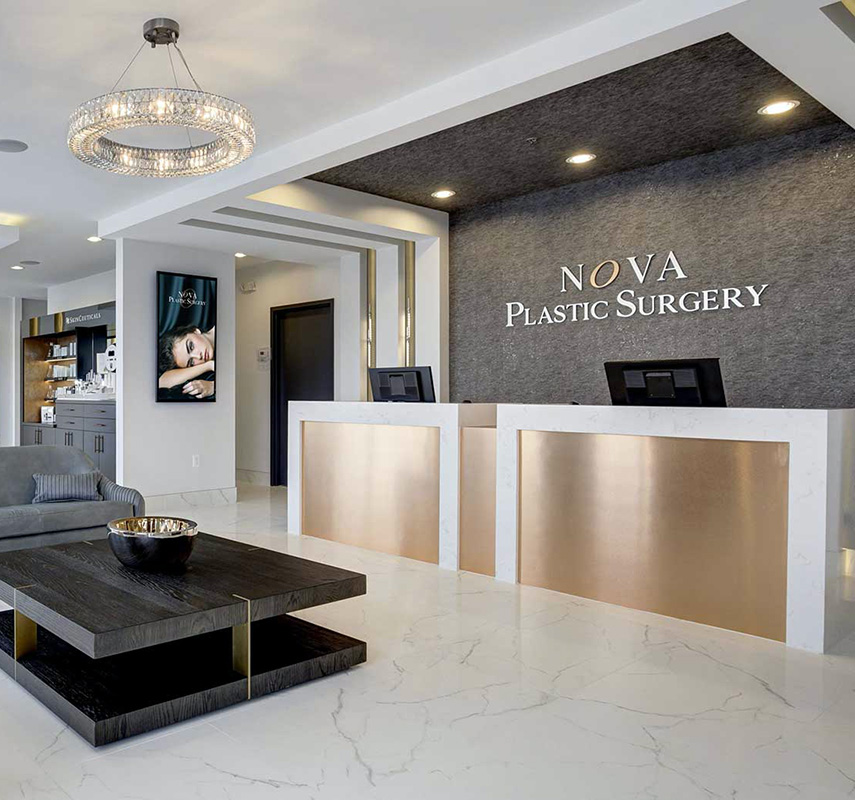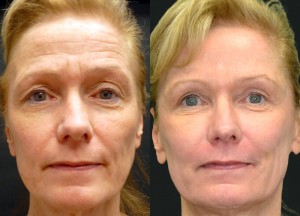
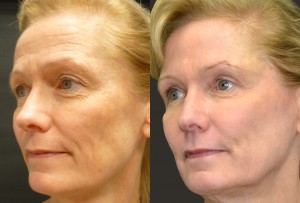
The end of the year is an excellent time to consider a laser resurfacing treatment. Think of everything your skin has been through in the last ten or eleven months! Every kind of weather, sun exposure over the summer, and now dry air from indoor heating and cold winds. Laser resurfacing can help combat many signs of aging that come from regular environmental exposure, including a dry texture, age spots, fine lines, and a dull complexion.
Laser surfacing, also known as a laser peel, removes the top layer of dead skin, revealing the younger, more supple skin underneath and encouraging collagen production.
What Are the Benefits of Laser Resurfacing?
As we live our regular lives, were exposed to damaging radiation from the sun and free radicals in the air, mostly from pollution. UV rays damage the DNA of the skin cells, which can lead to sun spots, freckles, leathery texture, and even skin cancer. Free radicals cause oxidation in the skin by removing electrons from otherwise healthy skin cells. The end result is a dull complexion, sun spots or age spots, looser skin, and fine lines.
Laser resurfacing will allow the surgeon to remove target upper layers of the epidermis, destroying dead, dull, wrinkled, and damaged skin. The heat from the laser stimulates collagen production, which will cause the skin to tighten and firm up. The result is a brighter, more vibrant, more even complexion, reduced appearance of sunspots and age spots, and reduced appearance of fine lines- all of which make you look younger and more energetic.
How Does Laser Resurfacing Work?
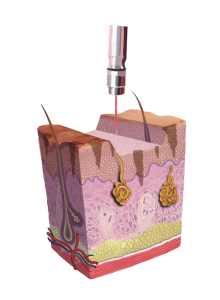
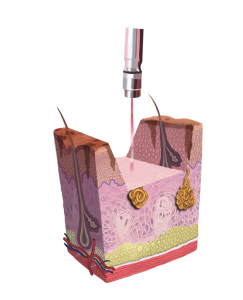
At NOVA Plastic Surgery, we use the Sciton laser system, a state of the art resurfacing tool that lets Dr. Nukta target precisely the areas causing you concern. Because of the technological advantages of the system, the laser resurfacing treatment is actually more effective than a chemical peel because the surgeon can adjust the depth of treatment as needed. A chemical peel treats the entire face at the same depth.
The computer in the Sciton system scans the face, ensuring precision in the upcoming treatment. The heat is delivered at a specific wavelength programmed by the surgeon and controlled digitally. The laser is directed at the problem areas, and delivers heat to remove the damaged skin. This both exposes new skin and encourages the body to generate new, healthy skin. The glow that comes from laser resurfacing is simply the glow of healthy, young skin that is free from environmental damage.
Laser resurfacing is an outpatient procedure usually done with local anesthesia. It generally takes about two hours, including the preparation of the patient.
What Will My Recovery Be Like?
Youll have some redness, swelling, and some irritation just after the procedure. Irritation and swelling usually resolves within a week, and any redness will resolve within 30 days to reveal your new look. Depending on the type of laser treatment you select, you might be able to return to work immediately, or you might need to take a week or two off to recover. No matter what type of procedure you get, youll need to stay out of the sun and use the moisturizer provided to you by the office.
The precision of the Sciton system ensures that you dont have any unnecessary treatments, so your recovery time will be as short as possible and you will have as little discomfort as possible. For most patients, one treatment is all thats needed to treat the areas of concern.
Is This Treatment For Everyone?
Laser resurfacing can be done on any skin type (oily or dry) and can be done on a number of areas of the body, but patients with darker skin tone will need to avoid it. Lasers can disrupt the melanin in the skin of patients with darker tone, which can lead to pigmentation issues that can take several months to resolve. Your doctor will tell you during consultation if the laser resurfacing treatment is a good fit for your skin tone, or if another treatment would be more beneficial.
Patients who are currently under treatment for acne will need to wait until their treatment is completed, as certain medications dont pair well with the laser resurfacing. Patients with active cold sores may also need to wait until the issue resolves before undergoing a laser resurfacing.
When Should I Get a Laser Resurfacing Treatment?
As soon as you would like! Winter is an excellent time for the treatment because its cold and youll probably be snuggled up inside anyway. Since you need to stay out of the sun for awhile after treatment, why tempt yourself by having the procedure done during the sunny summer? Any redness will be gone and your new, younger looking skin will be vibrant and totally visible by the time warmer weather rolls around. The lower temperatures will also give you a bit more comfort after treatment, and youll be sweating less, which can help keep irritation to a minimum.

